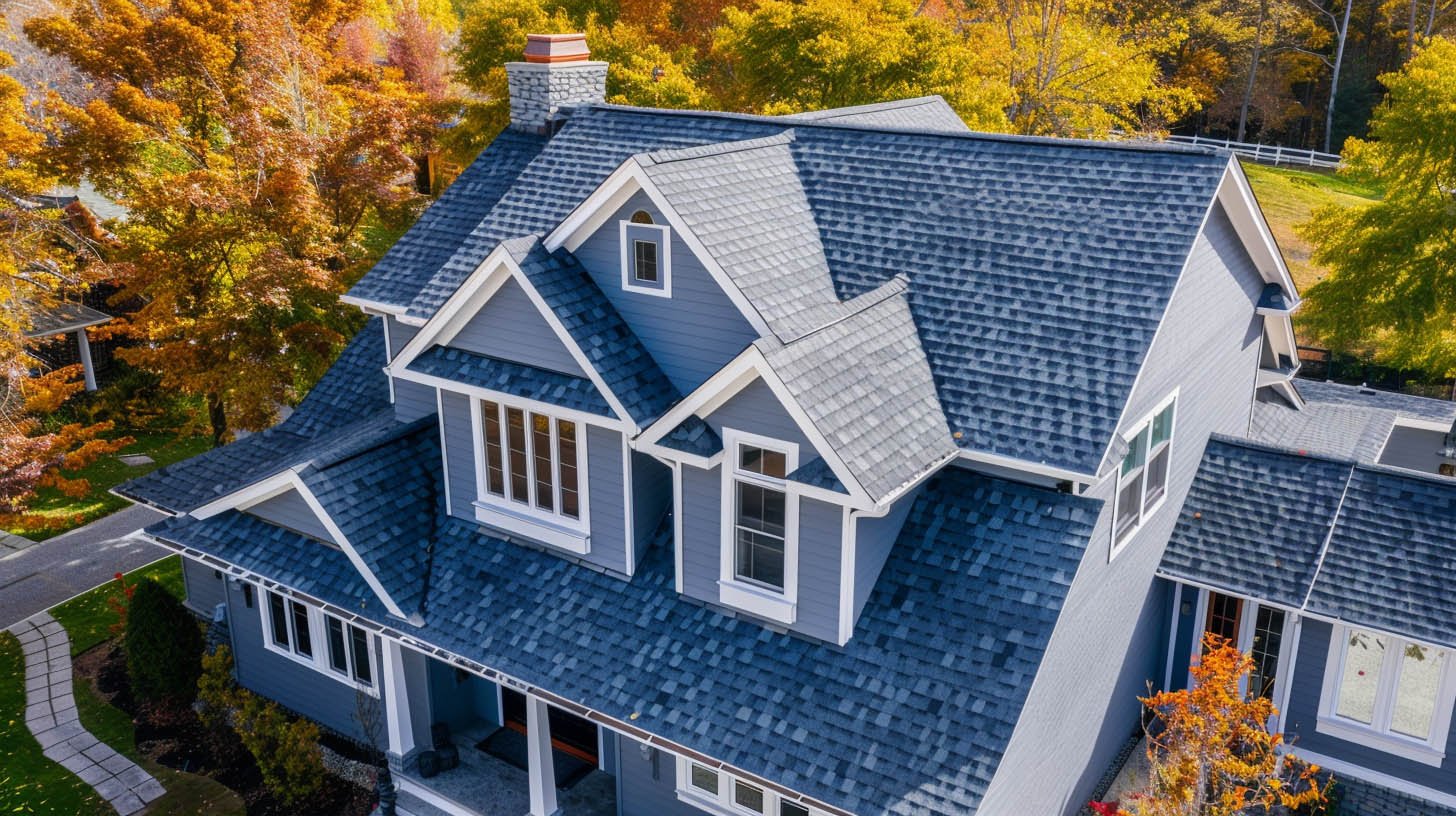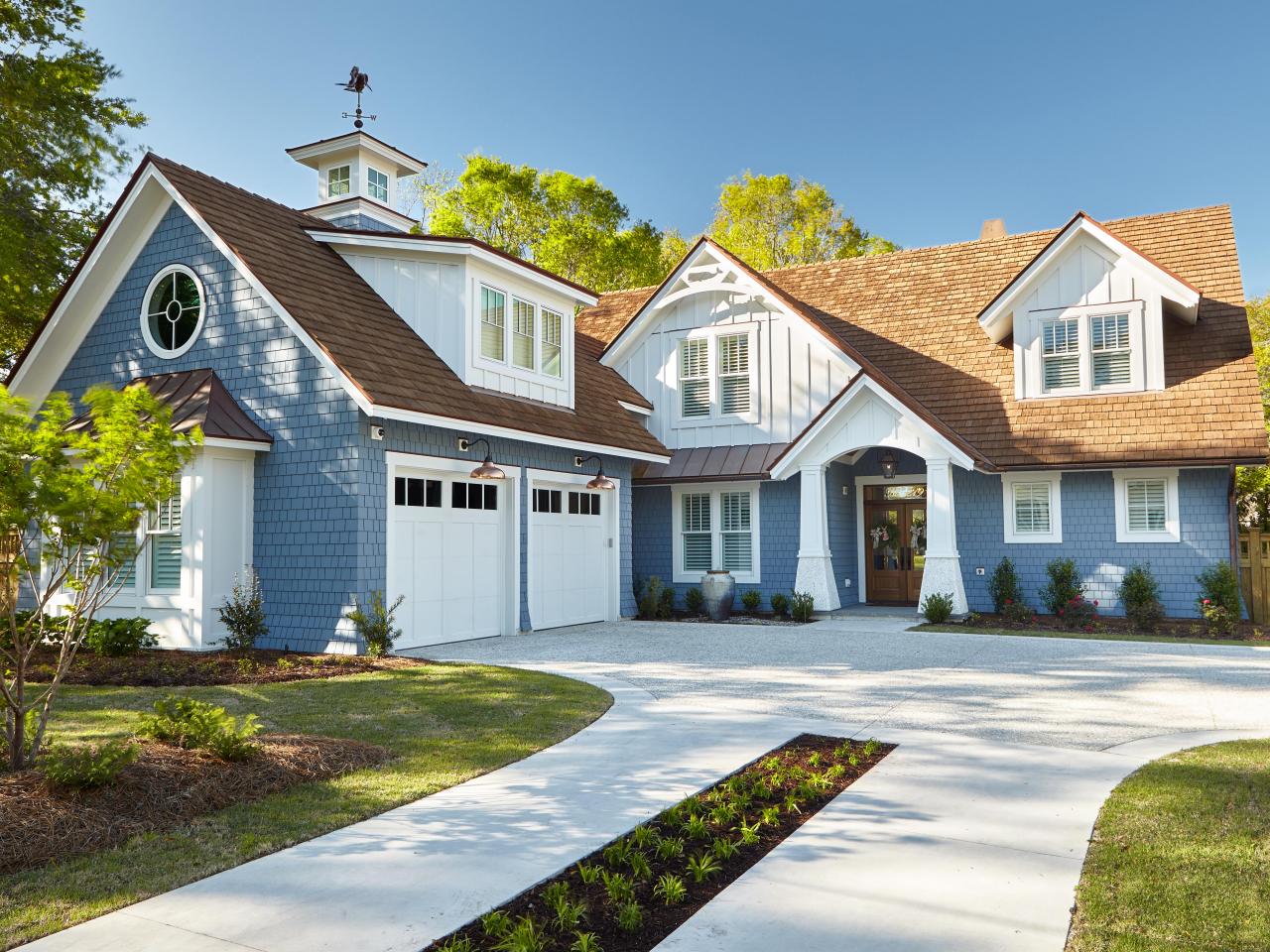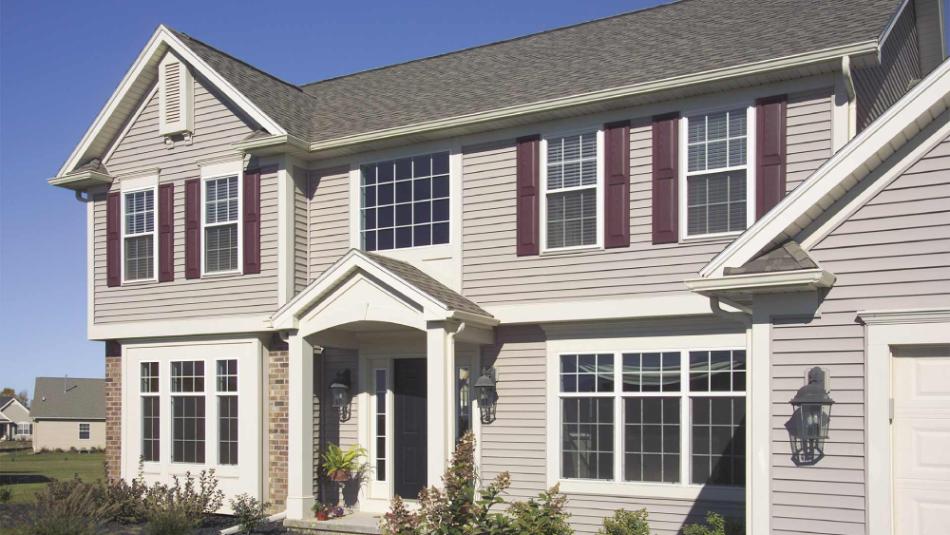Home improvement
Elevating Your Home’s Aesthetics with Quality Paint Choices

Key Takeaways:
- Understanding the vast array of paint types and finishes will tailor your project for maximum appeal and durability.
- Leveraging color psychology can imbue rooms with desired emotional undertones and influence well-being.
- Thorough preparation and professional expertise are essential for a flawless and enduring residential painting outcome.
- Regular maintenance of painted surfaces ensures longevity and sustained vibrancy of colors.
- Eco-friendly paint options contribute to healthier living spaces and broader environmental benefits.
Understanding Paint Types and Finishes
The choice of paint can entirely redefine the character of a room. Water-based paints, like acrylics and latex, are celebrated for their ease of use and quick drying times, making them an excellent choice for a weekend project. They’re also environmentally friendly, emitting less odor and volatile organic compounds (VOCs). On the other hand, oil-based paints, known for their durability and smooth application, are suited for high-traffic areas and trims that endure frequent touches and cleaning. Selecting the correct type of paint is pivotal in achieving the desired results for your Residential Painting project.
Paint finishes significantly affect the aesthetic and functionality of your walls. Finishes range from flat, which offers a velvety, non-reflective surface ideal for ceilings and low-traffic areas, to high-gloss, which provides a durable and easily cleanable sheen ideal for kitchens and bathrooms. Eggshell and satin finishes offer a middle ground with a slight luster and better washability than flat paint, making them suitable for living rooms and dining areas. A semi-gloss finish works well for doors and moldings, providing a hard finish that stands up well to moisture and wear.
Color Psychology and Selection
Not solely an aesthetic choice, the color selected for a space can dramatically influence the mood and atmosphere of a room. Warmer colors, like red and orange, can evoke feelings of warmth and energy, making them better suited for social spaces like living rooms. More excellent colors, such as blue and green, induce calmness and could be better for bedrooms or bathrooms where relaxation is essential. Neutral tones provide versatility and can be accented with various colors to change the room’s feel without needing an entirely new paint job. An understanding of color psychology can aid homeowners in selecting hues that coordinate nicely and promote the intended emotional response in each room.
When selecting a color palette, consider the room’s lighting, as this can drastically affect how a color appears. Natural light shows the most accurate color, while incandescent lighting brings out warm tones, and fluorescent lighting casts a sharp blue tone. Test your paint colors at different times of the day and under various lighting conditions to determine how they will appear in your living space.
Preparing for a Painting Project
Even the best quality paint can fall short if the preparation stage is neglected. A clean, smooth surface is foundational for a professional finish. Start with repairing any holes or imperfections in the walls. Even if it seems tedious, sanding creates a surface that paint can adhere to more effectively. A primer is crucial when painting over a darker color or transitioning from oil-based to water-based paint. It not only ensures good adhesion but also significantly enhances the life of your paint job, maintaining the vibrancy of the color over time.
A comprehensive approach to selecting tools and materials will facilitate a more streamlined and less stressful painting process. From brushes and rollers to painter’s tape and drop cloths, the right equipment can enhance the efficiency and neatness of the endeavor. Equally important is ensuring good ventilation to speed up drying time and dissipate fumes.
Hiring Professional Painters
For all the appeal of a DIY project, specific painting tasks are best left to the professionals. Factors such as the project’s scale, the high ceilings, or intricate details might necessitate the expertise of a skilled team. Professionals bring efficiency, precision, and an understanding of paints and surfaces that can distinguish between an average job and an immaculate finish. Expert painters can also advise on color trends, finishes, and how best to execute your vision for your space, reducing paint wastage and ensuring a high-quality finish.
The Role of Season and Climate in Paint Application
Seasons and climate conditions can be your ally or adversary in painting endeavors. Ideal painting conditions are usually found in mild, dry weather; excessive heat can cause paint to dry too quickly, leading to cracks or uneven texture. Too much humidity can extend drying times and affect the finish. Winter, although not the traditional season for painting, can have advantages, especially with today’s advanced paints that adapt well to lower temperatures. Consequently, planning your painting project around the weather forecast will pave the way for optimal results.
Maintenance and Care for Painted Surfaces
Maintenance is the guardian of your paint’s radiance. The march of time brings inevitable wear and tear; however, with regular maintenance, your walls can continue to look pristine. Routine cleaning, gentle washing, and avoiding harsh chemicals can preserve the paint’s integrity. Tackling stains promptly, touching up blemishes, and periodic inspections for any signs of peeling or cracking can keep your paint job enduring longer. Moreover, knowing the type of finish and its recommended care will ensure your approach to maintenance aligns with the needs of the paint.
The Environmental Impact of Paint
The conversation around paint and its environmental implications is becoming increasingly significant. Traditional paints contain chemicals and VOCs, which can contribute to pollution and pose health risks when released into the atmosphere. The demand for eco-friendly paints that minimize ecological footprints is on the rise. Low or zero-VOC paints, natural paints, and those made from renewable resources offer a responsible choice for homeowners looking to positively impact the environment while creating a safer living space for their families. The Environmental Protection Agency highlights the importance of selecting green building materials, including paint, to promote sustainable construction practices and healthier habitats.
Trends in Home Paint Colors and Techniques
Remaining current with the ever-evolving paint color trends can energize your decor and elevate your home’s aesthetics. This year, we may see the rise of earthy tones that reflect nature’s palette or a resurgence of pastel shades that create tranquil sanctuaries. Techniques such as distressing, color blocking, and decorative finishes are gaining popularity for adding character and texture to the walls. Whatever the trend, the key is to align the paint choice with the personal style of the inhabitants, making the home a reflection of the people who dwell within.
In conclusion, your approach to painting can redefine your living space. With the proper preparation, expert advice, and a conscious choice of materials, your next painting project can be a fulfilling endeavor that beautifies your residence and positively impacts your well-being and the environment.
Home improvement
Effective Strategies for Maintaining Your Roof’s Longevity and Health

Key Takeaways:
- Understanding the importance of regular roof maintenance.
- Tips on how to spot common roofing issues early.
- Advice on seasonal roof care to extend your roof’s life.
- Insight into eco-friendly roofing options.
- Resources for professional roofing inspections.
The Importance of Regular Roof Maintenance
Maintenance is essential to guaranteeing a roof’s lifespan and effectiveness. Frequent inspections assist in identifying possible problems before they worsen. Ignoring roof maintenance can lead to significant repair costs down the line. A professional roofing company can offer thorough inspections and maintenance plans tailored to your needs, ensuring your roof stays in optimal condition throughout the year.
According to Architecture and Design, consistent roof inspections can extend the roof’s lifespan by up to 50%. This substantial extension emphasizes the importance of staying vigilant and proactive with roof care. In addition to extending the lifespan of your roof, routine maintenance shields your house from potential water damage, mold growth, and structural problems that can result from neglected roofs.
Spotting Common Roofing Issues Early
Identifying problems early can save homeowners a lot of trouble. Look out for cracked shingles, water stains on your ceilings, and any visible sagging or damage. These signs indicate that your roof may need attention. A roofing company can help pinpoint these issues and provide solutions before they escalate into more severe problems. By performing regular self-inspections, especially after severe weather, you can catch issues before they worsen.
Seasonal Roof Care Tips
Your roof faces new problems with every season. To prevent ice dams in the winter, shovel snow as soon as possible. If ice dams are not removed, they can seriously harm your roof’s structure and gutters. Gutter cleaning in the fall is crucial to avoid obstructions that could result in water damage. Spring is the best time for a comprehensive inspection to assess and repair any damage that might have occurred during the colder months. Water leaks under your shingles are avoided by routinely clearing debris from your roof and gutters.
Summer can also cause wear and tear due to intense heat and UV rays. The intense sunlight can cause roofing materials to deteriorate faster, leading to cracks and leaks. Using reflective roof coatings can help mitigate some of the damage caused by UV rays. Regular maintenance throughout the year ensures your roof stays in optimum condition, regardless of the season. Scheduling routine inspections at the beginning of each season can help identify potential problems before they become serious.
Eco-Friendly Roofing Options
Several eco-friendly roofing materials are available for those looking to reduce their environmental impact. Options like recycled shingles, metal roofing, and green roofs not only help the environment but can also improve your home’s energy efficiency. Recycled shingles, for example, use materials like rubber and plastic, significantly lowering the environmental footprint compared to traditional options. These materials often come with a longer lifespan, reducing the need for frequent replacements.
Metal roofing is highly durable and reflects solar heat, reducing cooling costs in the summer. It’s also fully recyclable at the end of its life, making it a sustainable choice. Green roofs, which involve planting vegetation on your roof, provide natural insulation and absorb rainwater, reducing runoff and providing a habitat for wildlife. These roofs can also improve air quality and reduce urban heat island effects. Considering the numerous benefits, eco-friendly roofing options represent a worthwhile investment for the environment and your wallet.
When to Consider a Roof Replacement
Roofs don’t last forever. If your roof is over 20 years old and showing signs of wear, consider a roof replacement. New roofing materials are more durable and energy-efficient than those from decades past. Investing in a new roof can raise your house’s exterior appeal, value, and energy efficiency. Advanced materials provide better performance and aesthetics. Examples of this include metal roofing and architectural shingles.
Persistent leaks, widespread shingle damage, and noticeable sagging are signs that you may need a replacement. A professional roofing contractor can provide an honest assessment and help you choose the best materials for your new roof. You must weigh the benefits and drawbacks with a trustworthy expert before choosing a complete replacement. They can guide you through your options and ensure that you make the best decision. You should consider warranties, installation costs, and continuing maintenance before deciding.
Choosing the Right Roofing Contractor
Selecting a reputable contractor is crucial for any roofing project. Ensure they have proper licensing, insurance, and positive reviews from previous customers. A good contractor will offer a detailed estimate and warranty on their work. Transparency about the costs and expected timeline for the project is also a hallmark of a reliable contractor. They should be willing to answer all your questions and provide written agreements.
Choosing a local contractor is also beneficial, as they will be more familiar with your area’s climate’s specific challenges and requirements. A local contractor will likely grasp local building rules and permit procedures and respond quickly. If you choose the proper contractor, your roof will last longer and be of higher quality. Using industry credentials, personal recommendations, and internet reviews, you may make an informed decision and guarantee that your roofing project is finished to the highest standards.
Home improvement
Tips for Maintaining the Value of Your Home

Homeownership is a cornerstone of the American dream, but it comes with the responsibility of upkeep to ensure that the investment remains strong over time. This article will explore how simple maintenance, intelligent upgrades, and vital strategies can preserve and boost your home’s market value.
Key Takeaways:
- Understanding the importance of regular maintenance to sustain property value.
- Identifying cost-effective upgrades that can boost your home’s marketability.
- The role of curb appeal in preserving your home’s worth.
- How innovative technology can play a part in enhancing your living space?
- The benefits of professional inspections are that they prevent costly repairs down the line.
Regular Maintenance: Avoiding Costly Repairs
Residential upkeep should always be considered. Diligent homeowners know that preventive maintenance is much more cost-effective than reactive repairs. For example, regularly clearing gutters may seem trivial, yet it prevents water damage, which can lead to expensive roofing repairs. Monitoring HVAC systems ensures they run efficiently and reduces the likelihood of emergency breakdowns. By keeping up with maintenance, you not only avoid the inconvenience of sudden malfunctions but also protect the value of your property by preventing deterioration. In local homes Dallas PA, as with any area, maintaining or increasing home value requires strategic planning and informed decisions.
Cost-Effective Upgrades for a Modern Home
The only sometimes els only sometimes yield the best return on investment. Sometimes, it’s the subtle enhancements that resonate with prospective buyers or appraisers. Replacing old carpets with fresh, modern flooring or switching outdated cabinetry hardware can infuse new life into a home. These small touches can demonstrate a home’s readiness for sale without a sizable outlay. The strategy is to choose upgrades that visually and functionally align with current lifestyles and trends while focusing on cost versus value added.
Curb Appeal: First Impressions Count
Your property’s exterior setting stages the expectation of what’s within. Imagine the impact of blooming flowers versus unkempt shrubs or a bright, inviting door against weather-worn ones. Refreshing the landscaping, installing modern outdoor lighting, or even ensuring that the house number is visible and stylish are minor touches that play into the marketability of your home. Excellent curb appeal can set your property apart in a competitive housing market, heralding the care invested within its walls.
Incorporating Smart Home Technology
Modern homeowners and buyers are increasingly tech-savvy, leaning towards properties that offer technological conveniences. Integration of smart home devices such as energy-saving thermostats, app-controlled lighting, and advanced security systems is a sound investment. This tech trend offers immediate utility savings and enhanced security, and appeals to environmentally conscious buyers, potentially increasing a home’s desirability and value.
Professional Inspections: Preventing Unforeseen Expenses
It’s one thing to visually inspect your home and entirely another to have it evaluated by a trained professional. Periodic inspections can uncover issues that, if left unnoticed, could spiral into significant financial burdens. Whether checking for termite infestation, reviewing electrical systems, or assessing structural integrity, inspectors provide invaluable insights into the state of your property. Addressing issues promptly upon their advice can preclude value depreciation and prepare your home for unexpected market opportunities.
Environmental Factors and Your Home
Environmental conditions act silently but significantly on property values. Factors like local climate changes, flood risks, or air quality can sway a property’s long-term appeal. With increased awareness of these external forces, homeowners are taking measures like reinforcing insulation, waterproofing basements, or incorporating green spaces to enhance their homes’ resilience against environmental threats. These strategic choices protect against degradation and make homes more marketable in an environmentally-conscious era.
Home Value and Community Engagement
Understanding the broader picture of your neighborhood’s evolution is crucial to maintaining home value. Staying up-to-date with municipal development plans or property zoning changes can provide insights into future desirability and market trends. Moreover, being part of community initiatives or local governance can ensure your voice is heard in matters affecting property value while fostering a sense of community that can be a selling point for potential buyers.
For actionable advice on guarding against environmental risks and promoting sustainability within your home, the Environmental Protection Agency offers comprehensive resources detailing climate impacts on homes. In parallel, leveraging the potential of innovative technology in your home can be made simpler with the latest information found within the Smarter Living section of The New York Times, helping homeowners stay current with trends that can add both convenience and value.
Home improvement
Maximizing Home Efficiency: Modern Window and Siding Solutions

Key Takeaways
- Understanding the substantial impact of energy-efficient windows on home comfort and utility costs
- Exploring diverse siding materials and their contributions to energy savings and aesthetic enhancement
- Highlighting the necessity of precise installation for optimal window and siding performance
- Considering the increase in home resale value with high-quality exterior improvements
- Navigating the legal framework of building codes and regulations during installations
Understanding the Benefits of Energy-Efficient Windows
Energy-efficient windows such as those from Windows & Siding Outlet provide excellent insulation, reducing the need for heating and cooling systems. They reflect heat, protect interiors from harmful UV rays, and reduce noise pollution. Homeowners can save on energy costs while contributing to the sustainability of our planet. These windows are an essential component of an eco-friendly home.
Choosing the Right Siding Material for Durability and Style
Home siding balances functionality and appearance. Materials include vinyl, fiber cement, and wood, differing in durability, maintenance, insulation, and energy efficiency. Proper siding prevents heat loss and reduces energy use. Vinyl is affordable and easy to maintain but vulnerable to extreme weather. Fiber cement is highly durable and mimics wood at a lower cost. Wood adds a classic look but requires maintenance. Choose siding based on price, climate, architecture, and preference for appearance and maintenance.
The Impact of Proper Installation on Window and Siding Performance
Professional installation of windows and siding is crucial for their performance and longevity. It requires expert knowledge, precision, and adherence to industry standards. A poorly installed window or siding can lead to air and water infiltration, thermal inefficiency, and potential structural damage over time. Therefore, hiring experienced contractors who guarantee a watertight seal around the windows and securely fasten and adequately align the siding panels, preventing drafts and water damage, is essential. Professional installers have the tools and materials to comply with local building codes and product requirements, ensuring performance and maintaining manufacturer warranties.
Options for Customizing Window and Siding Features
Homeowners now have more options than ever to personalize their home’s exterior. Customized window shapes, sizes, styles, and a wide range of siding textures and colors allow for a bespoke design that blends with the home’s natural surroundings and improves energy efficiency. Such personalized features add both short-term satisfaction and long-term value to a property.
Impact of Windows and Siding on Resale Value
New windows and siding provide immediate comfort and energy savings and improve your property’s resale value. High-quality upgrades make your home more attractive to buyers and may raise its market price. Energy-efficient homes with certification are especially appealing to environmentally conscious buyers. By highlighting these premium features, homeowners can showcase the tangible improvements made to their property and leverage them as a significant selling point.
Regulatory Considerations for Window and Siding Installation
Use building codes, permits, and inspections to ensure your home improvement project is legal and safe and doesn’t lead to fines or property devaluation. Obtain necessary permits and schedule inspections to validate the quality and legality of the work done. Partnering with an experienced contractor is the best way to navigate these regulations. Understanding available technologies and materials empowers homeowners to make informed decisions for well-planned window and siding upgrades that increase energy efficiency, curb appeal, and home value.
-

 Tech5 months ago
Tech5 months agoGeekzilla.tech Honor Magic 5 Pro Ultimate Guide.
-

 News5 months ago
News5 months agoLuxury FintechZoom: Unveiling Success Stories and Best Practices in Fintech Excellence
-

 News4 months ago
News4 months agoUnveiling the Mystery: Paige Bueckers’ Boyfriend Revealed
-

 Auto5 months ago
Auto5 months agoHow Geekzilla Autos is Revolutionizing Car Design
-

 Business5 months ago
Business5 months agoExploring the Success Story of VC7774
-

 Entertainment5 months ago
Entertainment5 months agoPossiblyEthereal: A Deep Dive into a Mystical Concept
-

 Blog4 months ago
Blog4 months agoThe Ultimate Guia Silent Hill Geekzilla: Comprehensive Guide
-

 Fashion4 months ago
Fashion4 months agoExploring the Fascinating World of λιβαισ
